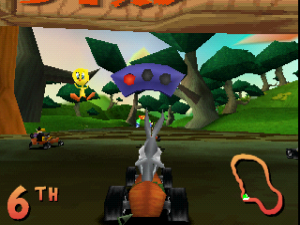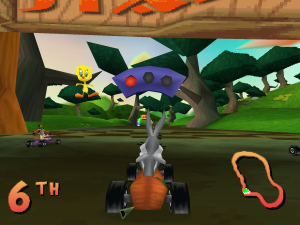Emulation can get a bad rap sometimes. I think that mainly comes from people who don’t really understand what they’re talking about. I also think it comes from people who are just opposed to the very concept of emulating a video game outside the original hardware for which it was intended.
Since I discovered the whole idea of emulation back in 1999, I’ve been fascinated by it. Part of this stems from my fascination with computers and old 8-bit and 16-bit video games in general, but I don’t think I’ll ever get over just how cool it is to run software meant to run on one specific architecture on a completely different one.
There are also definite advantages to playing certain games on an emulator as opposed to the original hardware. The Atari 5200 comes to mind. The controller for that console is notoriously terrible, and features a non-centering joystick which all but ruins most of the few games that came out for the system. The Atari800Win PLus emulator eliminates that particular problem by automatically centering the joystick after each input, making the games play like they normally damn-well should have.
Other old consoles with questionably reliable controllers can be “fixed” and played with the most comfortable controller you own, too. The supremely uncomfortable and unresponsive Sega SG-1000 controller doesn’t need to get in the way when you play those games through emulation, and the same can be said for almost any system.
And while I’m talking about consoles from this early era of gaming, I can talk about video output. So many consoles in the late 70s and mid 80s had only RF video output, which is the lowest possible quality method to get a video signal from any device to your TV. This looks blurry and is riddled with interference, and is not particularly appealing, especially on bigger screens or a new LCD TV.
Emulation can solve this problem too by giving you a direct HDMI signal from your computer to your screen. My personal setup involves an emulation PC that sends an S-Video signal to a CRT TV with only composite inputs, but it suits me fine and replicates the look of the retro era perfectly. Pretty much any analog or digital output and input setup is possible with the right emulator and the right hardware these days, and a lot of new emulators can simulate things like scan lines for those who lack a CRT screen.
When we move chronologically ahead amid our consoles to the fifth generation, we start to get into polygon rendering. This is where upscaling can make games look better. Games that came out on the Sony PlayStation or Nintendo 64 had much lower screen resolutions than we’re used to today, and when scaled up, things tend to look blocky and pixelated.
I’ve stated before that this very effect is part of the appeal of old games for me, and it still is for 8-bit and 16-bit games. But with the advent of the 32-bit era, many graphics got rendered on-screen in a resolution that was not sufficiently clear to make them easy to see, and this sometimes affected gameplay.
Here are some images of the game “Looney Tunes Racing” from two different PlayStation emulators to show you exactly what I mean. The first one emulates the game in native 320Á—224 resolution, and the second one emulates it with polygon graphics upscaled to 1600Á—1200 and everything else resized to fit.
Click on the images and open them in new tabs to really compare the detail. The second image is a lot easier to look at, isn’t it? The game is easier to play and a lot more fun, I think, when the graphics are scaled up this way. Not only that, but you can really appreciate the artwork a lot better when the polygon graphics are upscaled to this resolution.
Not all PlayStation or Nintendo 64 games provide so much depth, beauty and detail when they’re upscaled, but a lot of them do. Some emulators for other fifth and sixth generation consoles can upscale the graphics as well, with often stunning results.
It’s for these reasons that I’ve come to prefer playing my collection of PlayStation games on my PC through emulation, even though I own a PlayStation 2 that plays them just fine. There are, however, some issues with PlayStation emulation, and that’s why I’ll now talk about some of the emulators out there.
No$PSX
This is the first emulator I tried, and I tried it first because I wasn’t sure if my emulation PC could handle PlayStation emulation. That computer is rather old, still runs Windows XP, and doesn’t even have a graphics card.
No$PSX is a very good emulator. I’ve found that of all the PlayStation emulators I’ve tried, it has the highest compatibility out of them all. Most games just work on this emulator, and there are only a handful that don’t or cause the emulator to glitch up or crash.
That being said, the gameplay experience with this emulator is quite limited because it does not support analog control or rumble. PlayStation games that utilize the DualShock controller simply won’t give you any rumble, and games like “Ape Escape” that require the full set of analog controls can not be played.
This is also one of those emulators that outputs the graphics only in native resolution. That screenshot above was taken in No$PSX, and that’s as good as the games ever look.
pSX
Second out of all the emulators I tried, pSX is another that outputs graphics only in native resolution. The graphics don’t look nearly as good as they do in No$PSX, but the brightness, gamma and contrast can be tweaked a bit. There are also sound issues with this emulator, with certain sounds being louder than they ought to be in certain games. Game compatibility is slightly lower than No$PSX, and this is my third choice of emulator to play games with. I use it only if a game won’t run in No$PSX.
This emulator does support rumble and analog controls though. Its method of support is a little tedious, and you must specify which hardware controller you wish the program to emulate before you load your game. If you try to use the DualShock on a game that doesn’t support it, for instance, then none of the controls will work and the game will appear to be unresponsive until you define the correct controller.
This brings up another reason why I don’t much care for using this emulator. It doesn’t work properly with my NUON+ controller, which is one that I bought specifically for emulators that support analog control and rumble.
ePSXe
A very common and popular emulator is ePSXe. This is the one that took that bottom screenshot. It upscales the graphics, supports rumble, supports analog, and would be damn near perfect if only it had better compatibility.
I’d say that only about half of my games work perfectly with ePSXe. Some others have graphical problems like missing screens, menus and loading bars. Some of them don’t load at all. It’s for that reason that I have to keep No$PSX and pSX around.
But when it works, man, does it ever work. Games look and play beautifully, and the experience of seeing all the detail that was hidden when I played games on my PlayStation 2 is what made me switch.
XEBRA
This is supposedly a very accurate emulator, but I’ve never gotten it to work. The interface is about as simple as solving a Rubik’s Cube.
PCSX-R
I have seen this emulator highly recommended and praised, and it appears to be based on ePSXe, which might sadly be defunct. At first I couldn’t get it to work at all due to a DLL error. What seems to be top-secret and something that nobody likes to ever divulge (least of all not the developers) is that this program requires the Visual C++ runtime libraries from Microsoft to be installed before it will work. Don’t fucking tell anybody!
Once I did get it to work, I promptly found out that the graphics are shitty and blurry and that it does not support my NUON+ controller at all. This emulator isn’t worth keeping around.
Mednafen
I have heard praise rising to the level of worship over this emulator. So of course, I thought I’d give it a try. The first time I did, I clicked on the program, saw nothing happen at all, and thought “Well, that’s that.”
Turns out you need a front end for the program. This is also top-secret information that the developers would never ever want you to find out. Either you use a front end, or you need to use it with the command line, and god knows I’m not resorting to using the fucking command line. I tried it again with a front end called MedGui. And the same exciting state of absolutely nothing happened. Though I did get to click around and pretend to make settings while I was getting frustrated.
So Mednafen is about as useful as a tree stump to me.
Your mileage may vary on all these emulators, though. They are freely available for download, so if you want to enjoy your collection of PlayStation games through emulation, give some of them a try.

